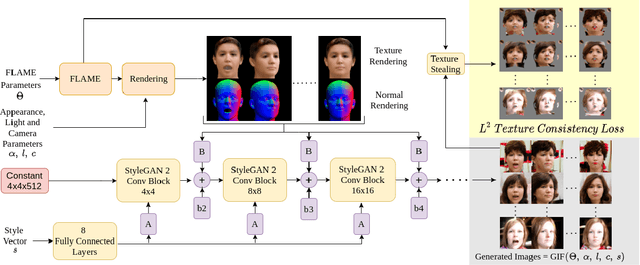GIF: Generative Interpretable Faces
Paper and Code
Aug 31, 2020



Photo-realistic visualization and animation of expressive human faces have been a long standing challenge. On one end of the spectrum, 3D face modeling methods provide parametric control but tend to generate unrealistic images, while on the other end, generative 2D models like GANs (Generative Adversarial Networks) output photo-realistic face images, but lack explicit control. Recent methods gain partial control, either by attempting to disentangle different factors in an unsupervised manner, or by adding control post hoc to a pre-trained model. Trained GANs without pre-defined control, however, may entangle factors that are hard to undo later. To guarantee some disentanglement that provides us with desired kinds of control, we train our generative model conditioned on pre-defined control parameters. Specifically, we condition StyleGAN2 on FLAME, a generative 3D face model. However, we found out that a naive conditioning on FLAME parameters yields rather unsatisfactory results. Instead we render out geometry and photo-metric details of the FLAME mesh and use these for conditioning instead. This gives us a generative 2D face model named GIF (Generative Interpretable Faces) that shares FLAME's parametric control. Given FLAME parameters for shape, pose, and expressions, parameters for appearance and lighting, and an additional style vector, GIF outputs photo-realistic face images. To evaluate how well GIF follows its conditioning and the impact of different design choices, we perform a perceptual study. The code and trained model are publicly available for research purposes at https://github.com/ParthaEth/GIF.
 Add to Chrome
Add to Chrome Add to Firefox
Add to Firefox Add to Edge
Add to Edge